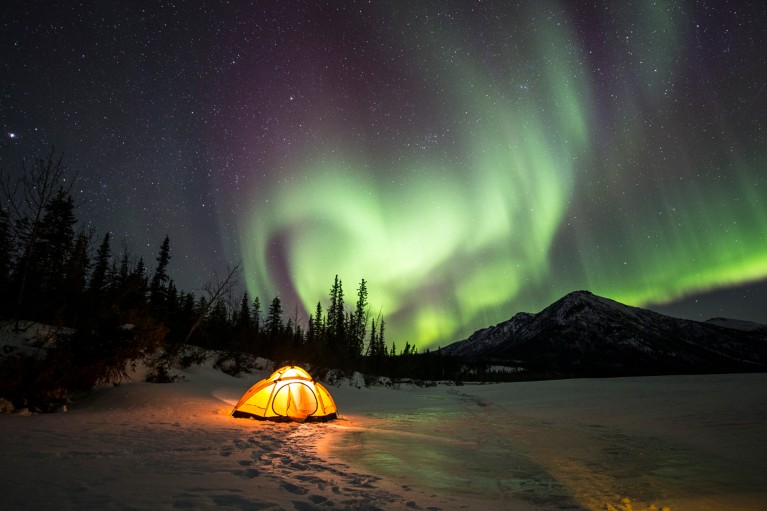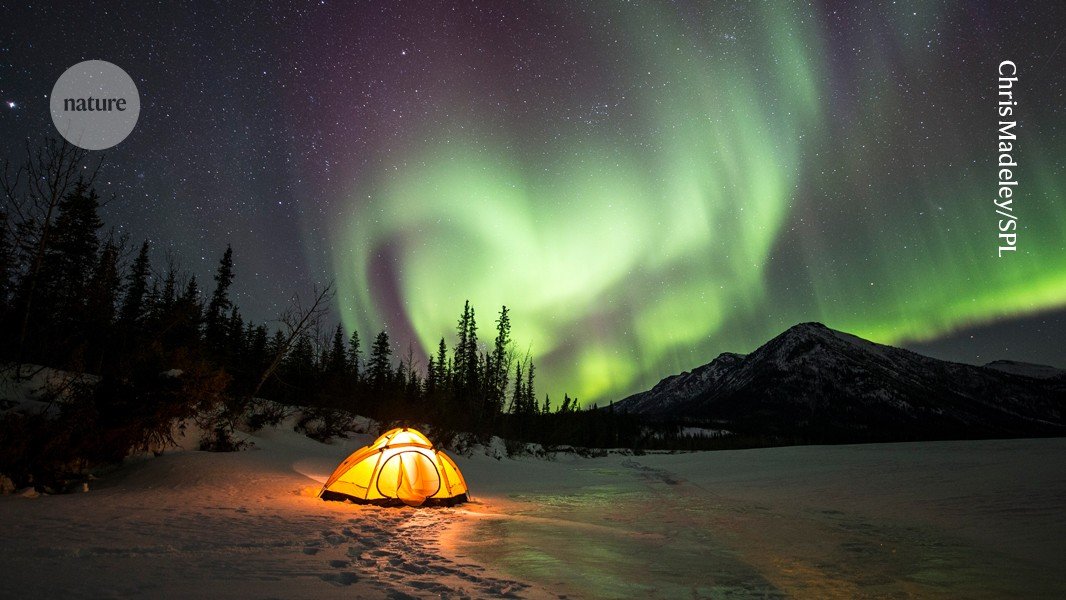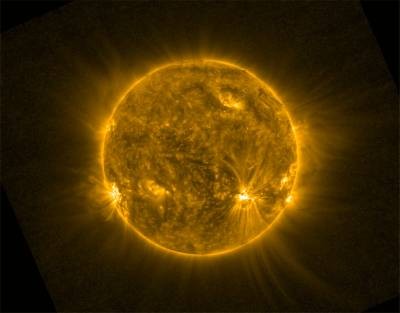
Garden-variety auroras (pictured) take the form of pillars or curtains of light, whereas polar rain auroras are seen as diffuse glows across the sky. Credit: Chris Madeley/Science Photo Library
On Christmas night in 2022, a massive aurora lit up the sky for thousands of kilometres around the North Pole1. The light show gave scientists a unique glimpse of the elusive ‘polar rain aurora’, a rare shimmering phenomenon that forms when energetic electrons from the Sun cascade onto Earth’s polar regions.
Auroras form when charged particles flowing from the Sun hit and interact with Earth’s magnetic field. Their energy is usually transformed into light shows of dancing green curtains, towering red pillars, or other spectacles such as those that dazzled skywatchers around the world in May.
Polar rain auroras are a special type that form when electrons travelling directly from the Sun’s corona, or outermost atmosphere, crash into Earth’s atmosphere. Polar rain auroras are a special type that form when electrons travelling directly from the Sun’s corona, or outermost atmosphere, crash into Earth’s atmosphere. These auroras are rare because there are seldom enough of these electrons hitting the atmosphere to generate a glow. And other types of charged particles often interfere with these electrons, preventing polar rain auroras from forming.
When the wind died
But for 28 hours in December 2022, the flood of other solar particles — known as the solar wind — dropped to a trickle. The polar rain electrons showered unimpeded onto Earth, creating a greenish glow that spanned more than 3,000 kilometres across the North Pole.
Anyone looking up that night in the high Arctic might have been able to spot it, says Keisuke Hosokawa, a space physicist at the University of Electro-Communications in Tokyo who led the team that reports the discovery today in Science Advances. Unlike the distinct curtains and pillars of light of standard auroras, this auroral glow was diffused across the sky.
Staring at the Sun — close-up images from space rewrite solar science
Scientists have occasionally spotted polar rain auroras in observations from satellites that look down on the poles from above2. Since 2011, Hosokawa has had a robotic camera pointed at the sky above the Norwegian islands of Svalbard in the Arctic Ocean, hoping to catch the first-ever glimpse of polar rain aurora from the ground. He did not succeed until January 2023, when he trawled through data from around three weeks before. The aurora from that period leapt out as being “very much different” from other types of aurora, he says.
Hosokawa then checked images of the polar regions taken by US military weather satellites at the same time as the Svalbard observations. In these, he saw the auroral glow filling almost the entire northern polar cap.
Satellites have spotted small-scale polar rain auroras in the past few decades, but the most recent observation of a large one was in May 1999 — when the solar wind also waned temporarily. Studying polar rain auroras could help scientists to understand how the solar wind interacts with Earth’s magnetic field, says study co-author Yongliang Zhang, a space physicist at the Johns Hopkins University Applied Physics Laboratory in Laurel, Maryland.




